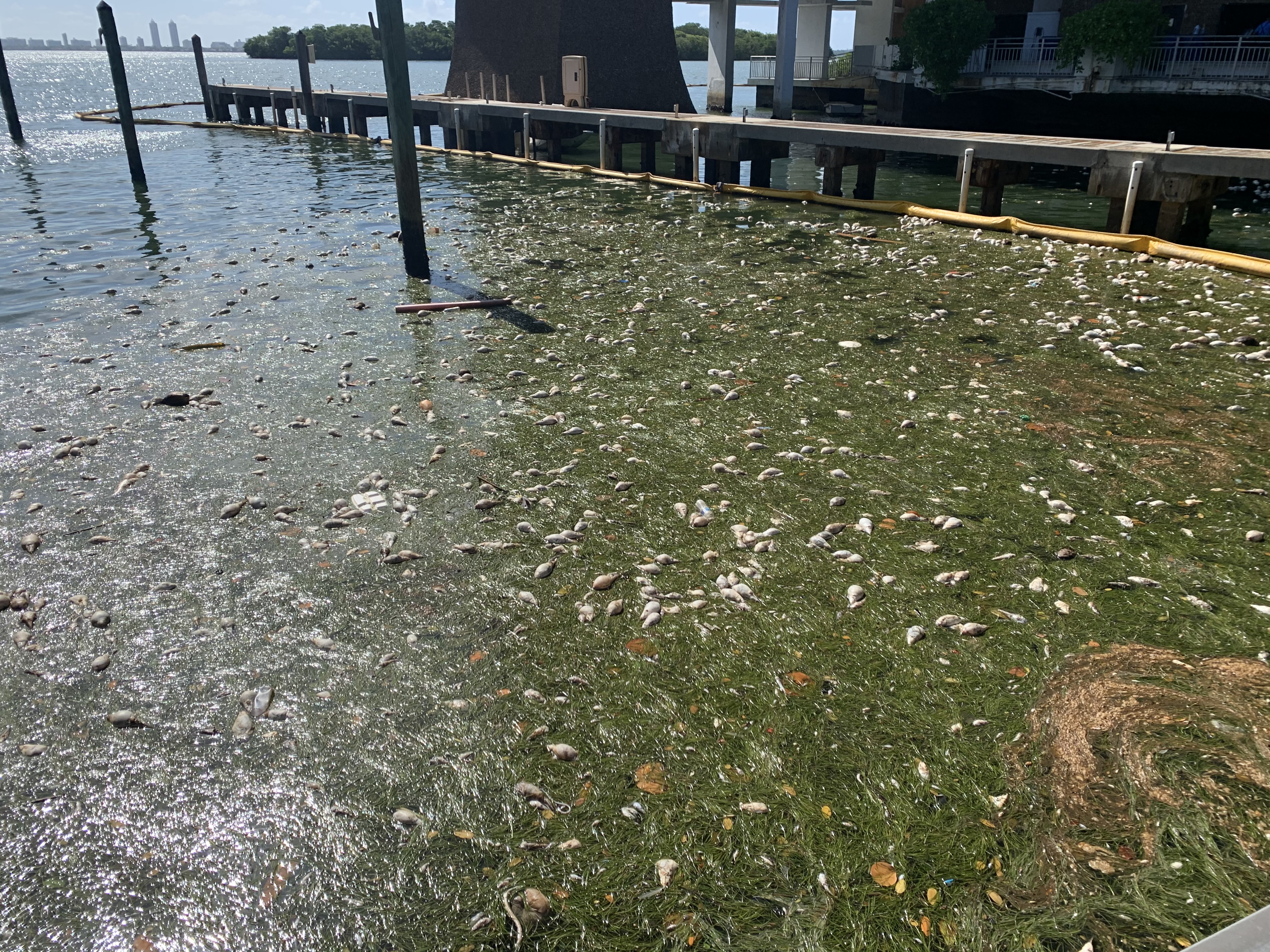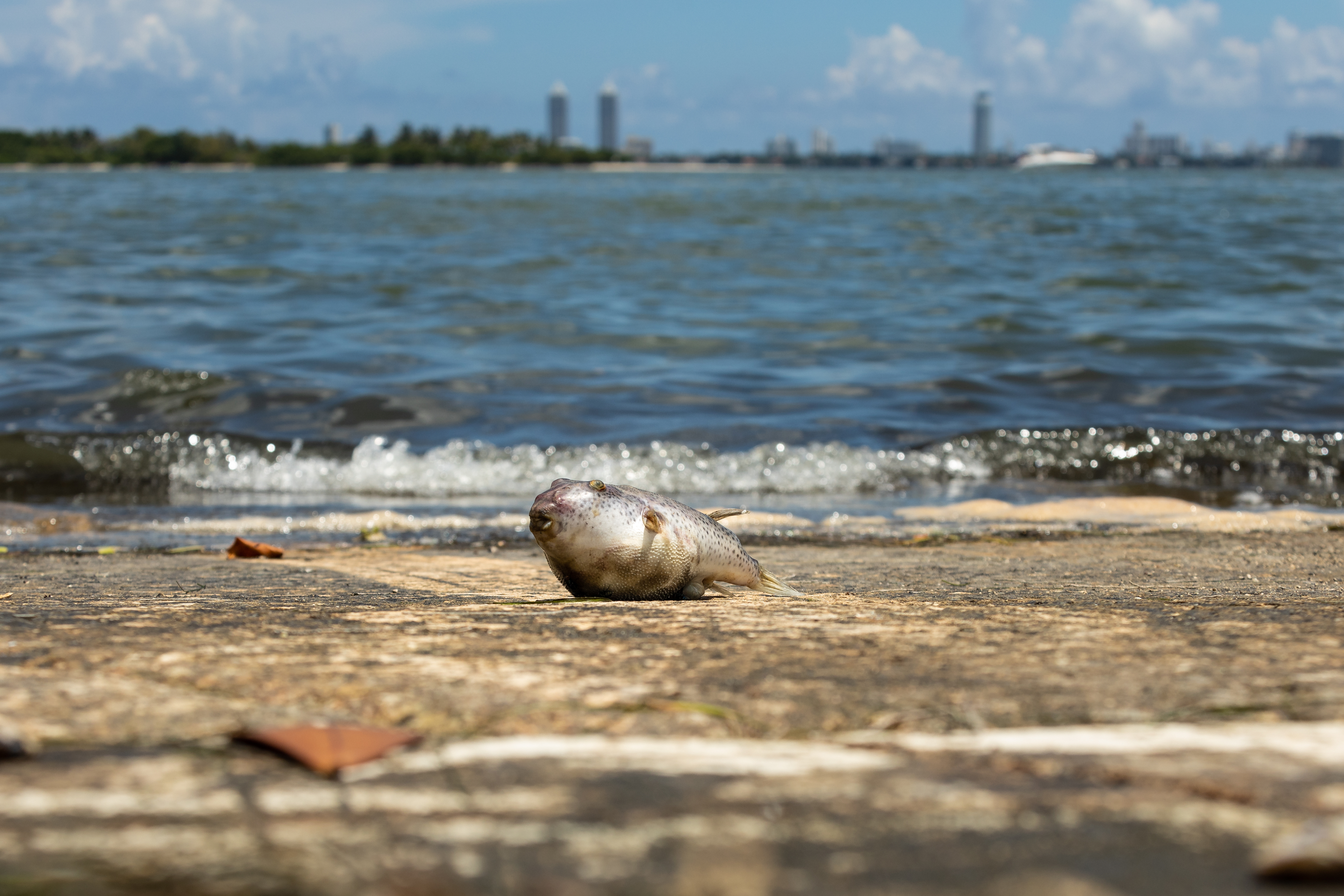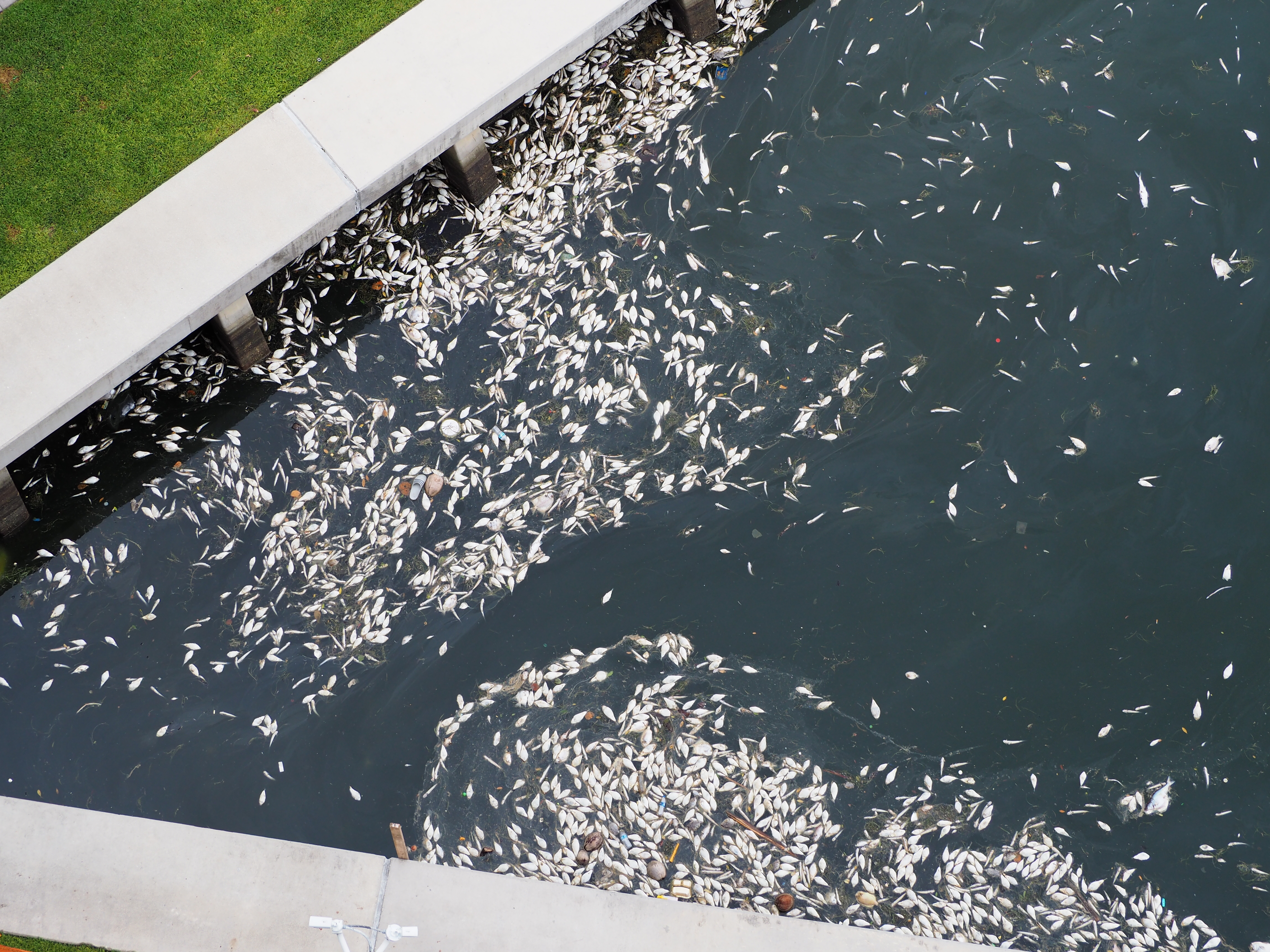Large cities—true urban powerhouses—are often juxtaposed with beautiful parks and coastal areas that are seemingly full of life.
Marine ecosystems themselves are both inherently resilient and desperately fragile. This intimate proximity between the ocean and our busiest places imparts a serious question: can we find a balance wherein both nature and people can thrive so close together? Dense urbanization, extensive development, resource extraction, and pollution have anthropogenically altered even remote areas. For coastal ecosystems shadowed by a bustling cityscape, too much disturbance from human sources challenges their ability to support life. A recent, real-world example is Biscayne Bay, located alongside the most populated coastal areas of Miami and South Florida. Interviews with Miami Waterkeeper director, Dr. Rachel Silverstein, and University of Miami (UM)’s Dr. Chris Langdon helped clarify event details, triggers, and future necessities.
 On August 10th, 2020, reports began flooding in of both dead wildlife and odd wildlife behaviors in the Bay. Dedicated water quality testing efforts revealed that the water’s dissolved oxygen (DO) levels were extremely low at several sites from North Miami down south to Virginia Key, with an apparent epicenter in the northern section. Over the next five days, the low-oxygen conditions caused an unprecedented fish kill event. Thousands of marine species washed ashore dead, and community members hurried to dispose of the organisms to prevent further environmental duress. The surviving marine life was seen swimming at the surface in an attempt to consume more oxygen, or aggregated in areas less impacted, such as at Pelican Harbor Seabird Station; here, scientists from Pelican Harbor, Florida International University (FIU), and Frost Science Museum began pumping oxygen into the water where hundreds of stingrays were seen desperately gathering. In totality, the fish kill event continued for almost a week, with related algae blooms reported shortly after in the Bay’s northern sections.
On August 10th, 2020, reports began flooding in of both dead wildlife and odd wildlife behaviors in the Bay. Dedicated water quality testing efforts revealed that the water’s dissolved oxygen (DO) levels were extremely low at several sites from North Miami down south to Virginia Key, with an apparent epicenter in the northern section. Over the next five days, the low-oxygen conditions caused an unprecedented fish kill event. Thousands of marine species washed ashore dead, and community members hurried to dispose of the organisms to prevent further environmental duress. The surviving marine life was seen swimming at the surface in an attempt to consume more oxygen, or aggregated in areas less impacted, such as at Pelican Harbor Seabird Station; here, scientists from Pelican Harbor, Florida International University (FIU), and Frost Science Museum began pumping oxygen into the water where hundreds of stingrays were seen desperately gathering. In totality, the fish kill event continued for almost a week, with related algae blooms reported shortly after in the Bay’s northern sections.
 Never before has a fish kill of this extent been recorded in Biscayne Bay. The grim event necessitated quick cooperation amongst relevant stakeholder groups—from government agencies to research universities and NGOs. Short-term solutions were focused on minimizing the localized fish kill impact and required innovative thinking on how best to create refuge areas for marine life, where higher DO levels could be manipulated until conditions improved. Emergency ordinances evolved from collective brainstorm sessions on how best to address the issue, primarily guided by Miami Waterkeeper, a particularly vested stakeholder. One such method was through the use of storm-water pumps to help aerate the water—at a rate of 3000 gallons per minute. Port Miami Fire Rescue even aided in this effort by recirculating seawater through fire hose pumps, producing an elaborate display of fountain-like projections from their boats. Subsequent ad hoc sampling confirmed that these efforts did help, with DO levels up to 30 percent higher in recirculation areas. The air-line installation at Pelican Harbor was also successful. Ultimately, these aeration methods created small refuge areas to help struggling organisms survive until conditions improved.
Never before has a fish kill of this extent been recorded in Biscayne Bay. The grim event necessitated quick cooperation amongst relevant stakeholder groups—from government agencies to research universities and NGOs. Short-term solutions were focused on minimizing the localized fish kill impact and required innovative thinking on how best to create refuge areas for marine life, where higher DO levels could be manipulated until conditions improved. Emergency ordinances evolved from collective brainstorm sessions on how best to address the issue, primarily guided by Miami Waterkeeper, a particularly vested stakeholder. One such method was through the use of storm-water pumps to help aerate the water—at a rate of 3000 gallons per minute. Port Miami Fire Rescue even aided in this effort by recirculating seawater through fire hose pumps, producing an elaborate display of fountain-like projections from their boats. Subsequent ad hoc sampling confirmed that these efforts did help, with DO levels up to 30 percent higher in recirculation areas. The air-line installation at Pelican Harbor was also successful. Ultimately, these aeration methods created small refuge areas to help struggling organisms survive until conditions improved.

Despite this harsh reality of current conditions, our outlook needn’t be defeatist. There are tangible actions that would directly result in a healthier Bay and an overall healthier coastal community. Dr. Rachel Silverstein points to infrastructure improvements as the key to long-term solutions for Bay health—namely, the removal of old septic tank systems, a subsequent switch to centralized waste treatment, and a mechanism of treating and filtering storm-water runoff before it reaches the Bay. Adjusting the flow quantity and timing for adjacent inland waterways would also help control freshwater influence into the Bay system. In terms of fertilizers, a recent City of Miami ordinance details restrictions of application types and periods. Individual homeowners can also contribute by heeding these ordinances and even stricter recommendations. These long-term suggestions for Bay improvement were supported in a Consensus Statement released earlier this month, signed by representatives from 26 organizations.
It’s quite clear that the future health and resiliency of Biscayne Bay necessitates our full engagement. The sheer number of organizations and community members involved in helping with this fish kill event showcases the willingness that already exists to protect these waters. With current and future efforts, we can find a balance wherein both nature and people can flourish together. Investing in infrastructure and aiding in improvements will ensure that the Bay becomes a healthy and thriving part of South Florida’s identity for decades to come.
By Megan Fraser, ECO Contributor





